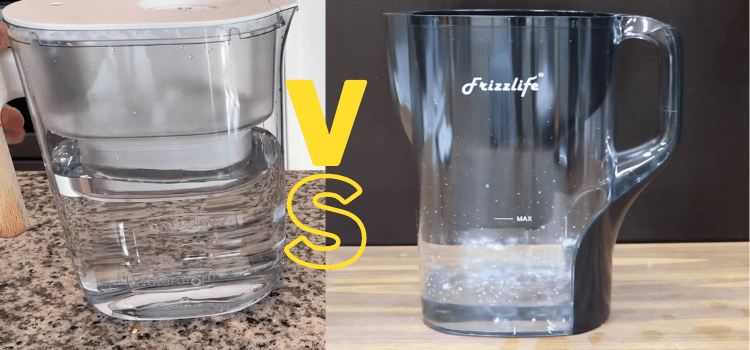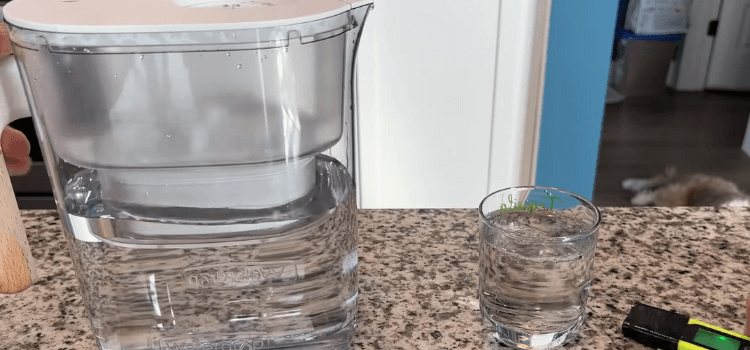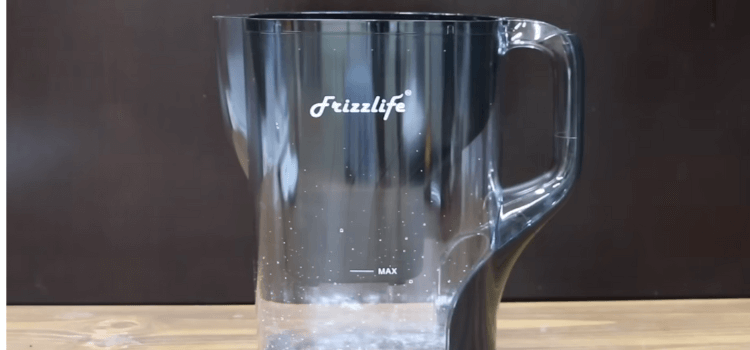As an Amazon Associate, I earn from qualifying purchases.
Clean water stands as a cornerstone for nurturing optimal health and well-being. As apprehensions regarding water quality continue to surge, numerous individuals are gravitating towards water filtration systems to safeguard against contaminants. Among the frontrunners in the water filtration domain lie Waterdrop and Brita, renowned for their efficacy and reliability. In this article, we’ll compare the features, performance, price, and environmental impact of Waterdrop and Brita filters to help you make an informed decision.

Waterdrop vs Brita Comparison Table
Name | Brand | Special Feature | Power Source | Price |
Waterdrop | Waterdrop | NSF certified, Chlorine Reduction | Non Electric | |
Brita | Brita | Change Filter Indicator | Corded Electric |
What is Waterdrop?
Waterdrop is a leading manufacturer of water filtration products, known for its innovative designs and advanced filtration technology. Within its repertoire, the company presents an extensive array of offerings spanning pitchers, faucet filters, and under sink filtration systems. Crafted with precision, Waterdrop filters excel in their capacity to expunge impurities like chlorine, lead, mercury, and assorted harmful contaminants, thereby ensuring the delivery of pristine, delectable water.
What is Brita?
Brita reigns supreme as a stalwart figure within the water filtration sphere, boasting a legacy steeped in excellence. With a diverse portfolio encompassing pitchers, water bottles, and faucet filters, Brita stands as a paragon of versatility. Leveraging activated carbon technology, Brita filters adeptly mitigate the tang and scent of chlorine, alongside a spectrum of other ubiquitous tap water contaminants, endowing consumers with revitalizing, untainted hydration.
Water Filtration Technology
Waterdrop Technology
Waterdrop employs cutting-edge filtration technology, utilizing multiple layers of filtration media to effectively remove impurities such as chlorine, lead, and sediment from tap water. Their filters feature activated carbon and other proprietary materials to ensure superior water quality.
Brita Technology
Brita filters utilize activated carbon and ion exchange resin to reduce chlorine taste and odor, as well as remove contaminants like copper, mercury, and cadmium. Their filtration process aims to enhance the taste and purity of drinking water.
Key Features of Waterdrop Filters
Efficiency
Waterdrop filters boast high filtration efficiency, capable of removing up to 99% of common contaminants found in tap water. This ensures that you enjoy clean and safe drinking water with every pour.

Filtration Capacity
With a generous filtration capacity, Waterdrop filters can purify large volumes of water before requiring replacement. This makes them ideal for households with high water consumption.
Filter Lifespan
Waterdrop filters typically have a longer lifespan compared to traditional filters, lasting for several months before needing replacement. This not only saves you money but also reduces the hassle of frequent filter changes.
Design
Waterdrop filters are designed with user convenience in mind, featuring easy-to-install cartridges and sleek pitcher designs that complement any kitchen décor.
Key Features of Brita Filters
Efficiency
Brita filters are known for their reliable performance in reducing common water contaminants, ensuring that your drinking water tastes crisp and clean.

Filtration Capacity
While Brita filters may have slightly lower filtration capacities compared to some competitors, they still offer ample capacity for everyday use in most households.
Filter Lifespan
Brita filters typically require replacement every two to three months, depending on usage and water quality. Regular replacement helps maintain optimal filtration performance.
Design
Brita offers a variety of filter pitcher designs to suit different preferences, ranging from classic to contemporary styles. Their filters are designed for ease of use and maintenance.
Comparison of Features
When assessing Waterdrop and Brita filters, a pivotal aspect to ponder revolves around the design and features inherent in each offering. Waterdrop filters carve a niche with their chic and contemporary aesthetics, boasting an array of options tailored to cater to diverse tastes and complement assorted kitchen decors. Brita filters also come in a range of styles and sizes catering to different household needs and preferences.
In terms of filtration technology, both Waterdrop and Brita use advanced methods to remove contaminants from water. Waterdrop filters typically employ multiple stages of filtration, including activated carbon, ion exchange, and sediment filtration, to ensure thorough purification. Brita filters primarily rely on activated carbon to absorb impurities and improve water taste.
Performance Comparison
The performance of a water filtration system is crucial in ensuring that it effectively removes contaminants and provides clean, safe drinking water. Waterdrop filters are known for their high filtration efficiency, effectively removing a wide range of impurities, including heavy metals, chlorine, and sediment. Users often praise the clean and refreshing taste of water filtered by Waterdrop products.
Likewise, Brita filters earn accolades for their adeptness in enhancing water quality. Harnessing the prowess of activated carbon, Brita’s filters adeptly diminish chlorine taste and odor, along with a spectrum of prevalent contaminants, culminating in water of exceptional taste and purity, ideal for both quenching thirst and culinary endeavors.
Price Comparison
When considering purchasing a water filtration system, cost is often a significant factor for consumers. Waterdrop filters generally have a higher initial cost compared to Brita filters, due to their advanced filtration technology and premium features. However, it’s essential to consider the long-term costs, including filter replacement expenses.
While Waterdrop filters may have a higher upfront cost, they often have longer filter lifespans compared to Brita filters, resulting in lower ongoing maintenance costs over time. Additionally, Waterdrop filters may offer better value for money in terms of filtration performance and water quality.
Environmental Impact
In today’s environmentally conscious society, the environmental impact of water filtration systems is an important consideration for many consumers. Waterdrop is committed to sustainability and eco-friendly practices, with products designed to minimize waste and reduce environmental impact. Many Waterdrop filters are recyclable, and the company actively promotes responsible disposal and recycling of used filters.
Brita also emphasizes sustainability and environmental stewardship in its products and practices. Brita filters are recyclable through the Brita Recycling Program, which allows consumers to send back used filters for recycling.
Opting for Brita filters empowers consumers to partake in the reduction of plastic waste, thus making a tangible contribution to environmental preservation endeavors.
User Experience and Reviews
User feedback and reviews provide valuable insights into the performance and satisfaction levels of Waterdrop and Brita filters. Many users report positive experiences with Waterdrop filters, praising their effectiveness in improving water taste and quality. Waterdrop products garner favor among users for their convenience and user-friendly design, with numerous individuals acclaiming them as a premier substitute for bottled water.
Similarly, Brita filters receive widespread acclaim from users for their reliability and performance. Users commend Brita filters for their ability to remove impurities and improve water taste, making them a popular choice for households around the world. Many users also appreciate the affordability and accessibility of Brita filters.
Popularity and Market Share
In terms of popularity and market share, both Waterdrop and Brita are prominent players in the water filtration industry. In recent years, Waterdrop has witnessed substantial momentum propelled by its innovative product lineup and unwavering dedication to excellence. With an unwavering commitment to quality, the company persistently broadens its market footprint, captivating fresh clientele with its extensive array of filtration solutions.
Brita remains a dominant force in the water filtration market, with a strong brand reputation and loyal customer base. The Brita name is synonymous with quality and reliability, making it a top choice for consumers seeking affordable and effective water filtration solutions. Despite facing increasing competition, Brita maintains its position as a market leader in the industry.
Conclusion
When it comes to choosing between Waterdrop and Brita filters, there are several factors to consider, including design, performance, price, and environmental impact. Both brands present top-tier water filtration solutions capable of enhancing the taste and quality of tap water. Ultimately, discerning the optimal choice hinges upon your individual needs and inclinations. Whether you prioritize cutting-edge filtration technology, budget-consciousness, or eco-friendliness, rest assured, both Waterdrop and Brita proffer a plethora of options meticulously crafted to cater to your distinct requisites.
FAQs
No, Waterdrop filters are not compatible with Brita pitchers. Each brand has its proprietary filter design and specifications.
Brita filters aren’t engineered to eliminate fluoride from water. Their primary focus lies in tackling chlorine taste and odor, alongside addressing prevalent contaminants typically encountered in tap water.
Yes, Brita filters are certified by organizations such as NSF International for their performance and safety standards.
Yes, filtered water from Brita pitchers is suitable for use in coffee makers and other household appliances.
The warranty period for Waterdrop filters varies depending on the product. Check the manufacturer’s website or product packaging for specific warranty information.
As an Amazon Associate, I earn from qualifying purchases.
About The Author
Hi, this is Rise N Dine ATL. To learn more about us, visit the About Us page.
Leave a Reply